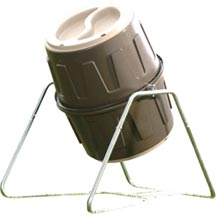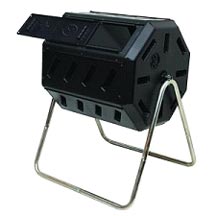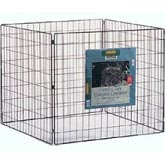The Simplicity of Compositing
By Patty Liston
 I attended a gardening class last night in order to learn more tips and tricks to having a healthy garden. The woman who arranged the meeting was one of 12 children (!). She talked about how avid her parents were about gardening and the resultant abundance of food that fed 14 people right from her back yard.
I attended a gardening class last night in order to learn more tips and tricks to having a healthy garden. The woman who arranged the meeting was one of 12 children (!). She talked about how avid her parents were about gardening and the resultant abundance of food that fed 14 people right from her back yard.
One of the projects that her whole family worked on was composting for the garden. Composting provides valuable nutrients to whatever you are growing, keeps down weeds, eliminates large water consumption once your garden grows, and is organic! I keep a compost bucket under my kitchen sink, and put my composting scraps in it until the bucket is full. When it is full, I haul the bucket out to my compost heap behind the house, add it to what is already there, sprinkle some water on it, turn the compost over with a pitch fork, and walk away. When we plant our garden next week with our grand-sons, the compost will be ready to put over the seed bed to begin to work its magic. What could be simpler than that?
 So, what exactly goes into making compost? A simple rule of thumb is any food that is "live" makes good compost. Think greens, peelings, egg shells, etc. "Dead" food such as meat scraps, and processed foods or dairy, are not used.
So, what exactly goes into making compost? A simple rule of thumb is any food that is "live" makes good compost. Think greens, peelings, egg shells, etc. "Dead" food such as meat scraps, and processed foods or dairy, are not used.
Compost needs air to breath. Turning your pile several times a week, will aerate your materials. Water should be added to your compost several times a week. This is done by sprinkling, not dousing with a hose. Your compost should not be soggy-wet. If it starts to look dry, just sprinkle with some water while you are turning your pile over.
Once you begin composting, the question arises as to where to put it. There are several solutions - from the simple "pile it in your yard on a tarp", to purchasing compost mixers.
Wooden Bins


These can be simply made by going to businesses and asking if you can have their wooden pallets. Most will be happy to have you take them away! Get 4 that are about the same size, wrap the corners with heavy wire and nail the sides together. Some people choose to have only 3 sides with one side open, making it a little easier to turn your compost the recommended 3x a week.
Tumblers


These can be found in the garden section of your local store. They can also be purchased at discount and bulk stores. Compost goes in the opening and you twirl the barrel to aerate. Simple, but more expensive to be sure, running around $99.00.
Wire Compost Bins


Wire compost bins can easily be made or purchased. (The one shown on the left is a Bosmere BOSK 765 30" wire compost bin and sells for @ $29.00. www.bosmere.com) To check out pictures and videos on how to make one, go to: www.WikiHow.com or www.Sunset.com. The DIY (Do-It-Yourself) webpage also has good information.
On the "With Our Best" website, (www.WithOurBest.com), there is a very comprehensive list of 101 Things You Can Compost. Some I had never heard of before, but I am going to start adding them to my pile!
To get you started, here are 10 common house-hold ingredients you can begin putting in your compost bin:
1. Grass clippings add necessary nitrogen to a compost pile, but be sure to mix with the "brown" materials, such as all of your dead leaves, that add carbon. Both are necessary for quick decomposition and rich compost. Piles made up of just grass will compact, slow down and start to stink.
2. Do not compost fats, pet droppings, or animal products. They will attract pests to the pile and can spread disease.
3. Newspaper or plain white paper from the computer is excellent for composting - just remember to shred it first to speed up the process.
4. Got compost? When finished it should look, feel and smell like rich, dark soil. You should not be able to recognize any of the items you put in there.
5. Worms love coffee grounds!
6. Plants that have been treated with pesticides and/or herbicides (weeds and lawn clippings) should be avoided.
7. The microbes responsible for breaking down your compost pile need a balanced diet of nitrogen and carbon. Nitrogen comes from green materials such as food scraps, manure,(cow, steer, chicken manure), and grass clippings. Carbon comes from brown materials such as dead leaves, hay, wood chips and shredded newspaper. A ratio that contains equal portions by weight (not volume) of both works best.
8. Finished compost is usually less than half the volume of the materials you started with, but it's much denser.
9. Wooden pallets make excellent compost bins. Start with one pallet on the ground. Drive two metal stakes into each side. Slide additional pallets over each support and you have a bin ready for compost.
10. Straw is an excellent source of carbon for your compost pile.
11. The perfect size for a compost pile is one that is at least 3' x 3' x 3'. It's not only a manageable size to turn, but it's ideal for retaining heat while still allowing air flow.
12. For faster composting keep your pile or compost bin in direct sun.
13. Compost piles should remain damp but not too wet. As you build your compost pile, make sure that each layer is moist as it is added. The surface should also remain damp (think of a wrung out sponge), especially during the summer months.
14. Does your compost pile smell? It's probably due to a large number of anaerobic microbes, which are working hard to break down your compost, but creating a smelly situation in the process. To cut down on the anaerobic process, aerate your pile regularly, creating air spaces and limiting the anaerobic microbes while stimulating the less stinky aerobic microbes.
15. Apply finished compost to your garden about 2-4 weeks before you plant, giving the compost time to integrate and stabilize within the soil.

